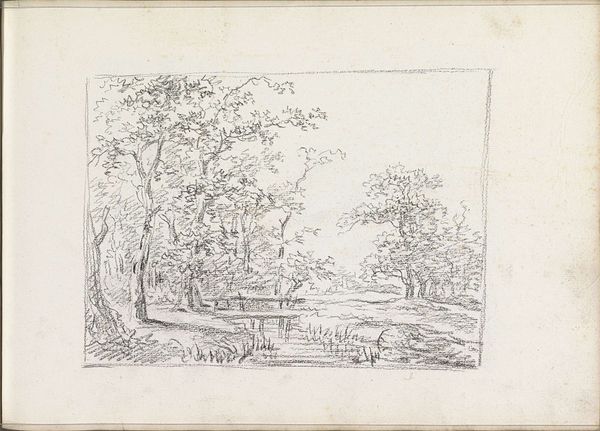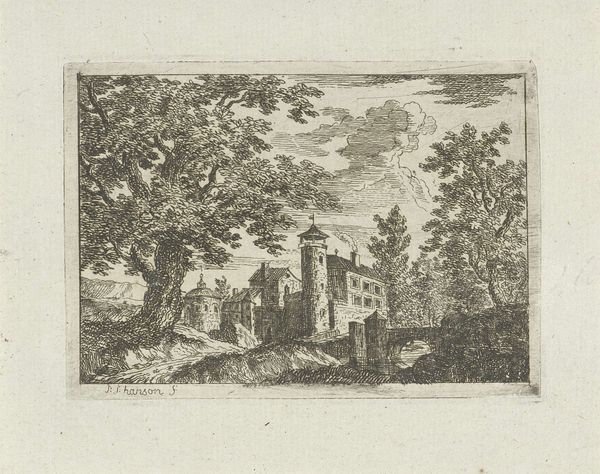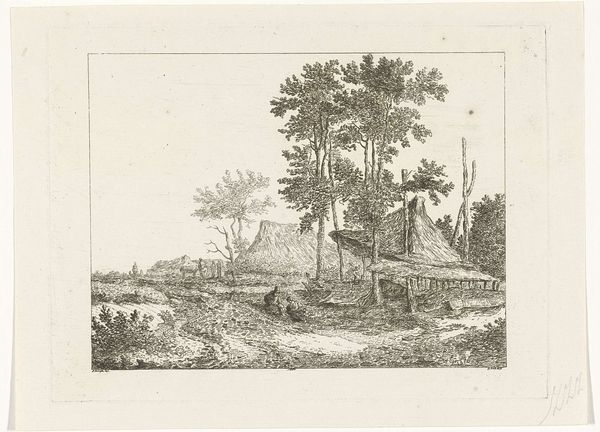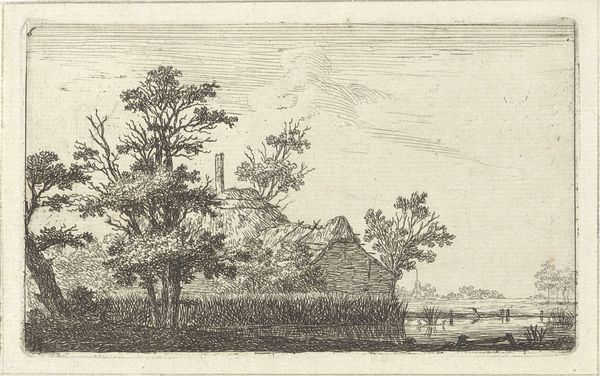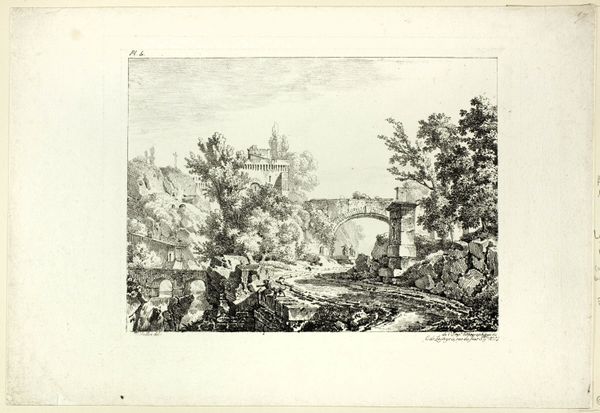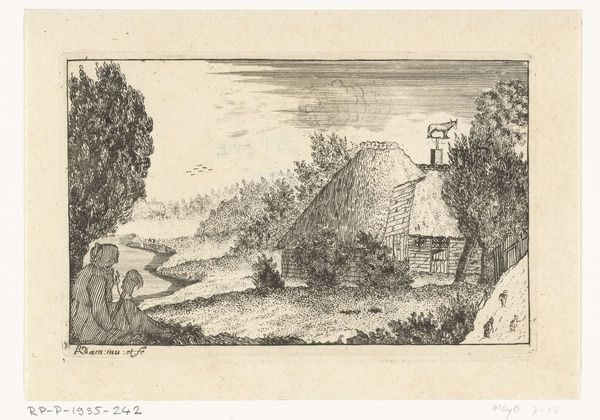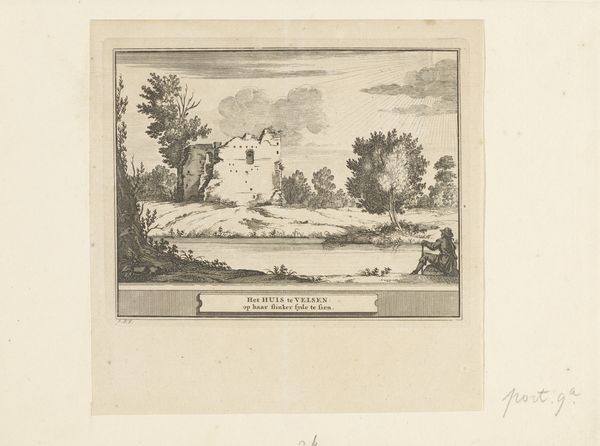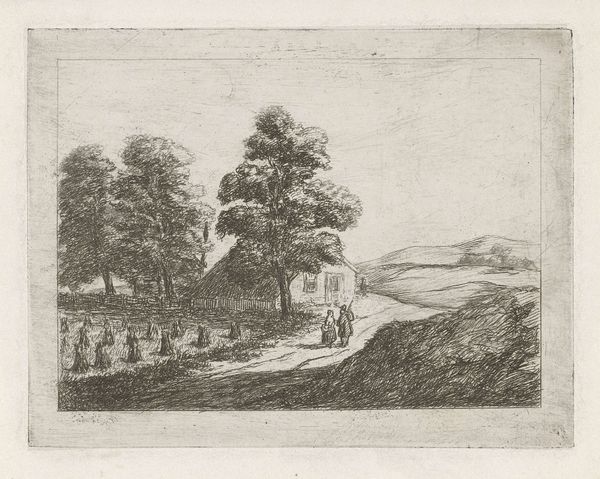
Dimensions: height 112 mm, width 137 mm
Copyright: Rijks Museum: Open Domain
Curator: The etching, "Landschap met brug en boerderij," or "Landscape with Bridge and Farmhouse," attributed to Jan Izaak van Mansvelt, made somewhere between 1771 and 1802, presents a meticulously crafted scene, rendered in line on paper. Editor: It's charming! So delicate and almost dreamlike with that monochromatic palette. There's a certain stillness that draws me in. Curator: Indeed, the artist's technique using etching—lines to define forms, shadow and light—results in varied texture throughout. It's romantic, but note how grounded the social realities are, like the clear implication of labor in the image. Editor: True, but notice how van Mansvelt used line quality to guide the viewer’s eye through the composition. The bridge as the clear focal point. The lines give form and dimension, making the architecture and natural forms quite distinct. Curator: The medium chosen tells its own story—etching was easily reproducible, suggesting a desire for wider distribution of the landscape, but also the consumption of these imageries for decorative uses among middle-class people. The materiality connects us directly to production. Editor: That’s a fair point, and while the reproducibility surely impacts its accessibility, I'm still drawn to how the piece embodies a peaceful, almost timeless scene. The interplay of horizontal and vertical lines to organize the overall scene create an appealing order. Curator: Exactly! I mean, the appeal and inherent order are strategically deployed to cultivate sentimental ideals about rural life, overlooking, of course, agrarian realities. Think about labor division in such settings, that kind of production, or consider the colonial demand for the period, especially across markets of decorative arts. Editor: It’s certainly multi-layered when you consider its historic distribution channels, its relation to broader period consumer markets. Thank you for framing this artwork and allowing me a new perspective to think about it through. Curator: My pleasure. Viewing the artwork through these dual lenses can deepen our appreciation. There is more to understand when analyzing art from the intrinsic view, and contextual approach combined together.
Comments
No comments
Be the first to comment and join the conversation on the ultimate creative platform.

